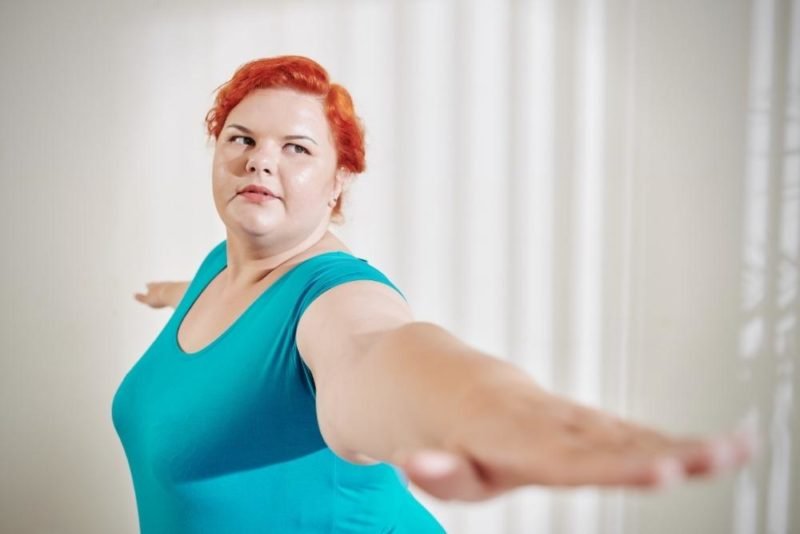
This is the ninth post in a 10-part series looking at the principles of Intuitive Eating. Last week’s post was on Principle 8: Respect Your Body [1].
In this post, we’re going to cover Intuitive Eating Principle 9: Movement—feel the difference. This principle used to be called “Exercise — feel the difference), but the authors of “Intuitive Eating [2]” found through working with their own clients that “exercise” was a word that carried a lot of baggage with it. You’ll find that I use all the terms: exercise, movement and physical activity.
No matter what you call it, finding the joy in movement is key to making it a lifelong habit. Turning exercise into an embodied experience can help with this joy, as well as help heal from experiences of negative embodiment. (What is embodiment? I wrote about it here [3].)
Why do you exercise?
First, if you engage in movement / exercise / physical activity, why do you do it?
Do you exercise because it feels good, it energizes your body and clears your head, or do you exercise because it burns calories? Exercising to lose weight is not very motivating, especially when you don’t get the results you hoped for.
Have you ever “crash exercised”? Maybe as part of a New Year’s Resolution? (“I’m going to go to the gym every day…”) How long did that last?
If you don’t exercise, why? Did you have bad exercise experiences when you were a child? Maybe you were awkward in gym class, hated to be told how to move your body, or never got picked for teams.
Were you pushed to exercise as a means of controlling your weight? The instigator could be a parent, spouse, partner or healthcare provider? Weight stigma is one cause of exercise avoidance, due to the feelings of shame it can bring up. If you’re being pushed to exercise, your inner rebel may kick up a fuss and respond with, “The hell I will!”

Finding the joy in movement
So how can we find — or enhance — the joy in movement? I wrote a whole post on this last year [4] that goes deep on this topic, but here’s a few quick tips:
- Focus on how movement feels. This is a practice that can help us develop positive embodiment.
- Decouple movement from weight loss. Research shows clearly that physical activity doesn’t lead to weight loss to a significant degree — and certainly not to the degree that is commonly believed (or marketed by gyms and fitness “gurus”). The “selling” of exercise as a weight loss tools is one of the most damaging side effects of diet culture and the weight loss industry.
- Focus on movement as a way of taking care of yourself [5]. Not only is moving our bodies regularly great for physical health in countless ways, including lowering blood pressure, building heart and lung strength, and helping us build and maintain strong muscles and bones, but it’s also great for our mental health. Odds are you’ve experienced the stress-relieving effects of enjoyable movement, but regular physical activity can also improve mood and lessen symptoms of depression.
- Avoid exercise mind traps. This includes thoughts such as, “Anything under an hour doesn’t count” or “Being busy counts as physical activity” or “I don’t have time to exercise” or “It doesn’t count if I don’t sweat.”

Making movement a part of life
Our bodies are meant to move, and that doesn’t just moving for a half hour or hour a day when you go for a walk or to the gym. Here are some key strategies for adding more movement to your life:
Increase activity in daily living. Movement isn’t just about formal exercise. Sure, engaging in types of planned exercise that you enjoy is great. (For example, I love strength training, walking, yoga, streaming Barre 3 workouts and my massive library of bellydance DVDs.) But simply moving is important too. This includes walking for errands, taking the stairs, puttering around your house, gardening, playing with your kids (or grandkids), parking further away from the store.
Make exercise fun. I bought a mini-trampoline this year. To me, that is fun. I even made a “rebounding” playlist so I can take bouncing breaks during the day. Bellydance is fun, because it’s creative (I used to study bellydance intensively before I went back to grad school to become a dietitian, and I love everything about it). For me, spin classes would be hell, but I have clients who LOVE spin cycling.
Make movement a non-negotiable priority. I’ll admit that this one is a gray area. On one hand, saying “No” to a get-together with friends/family you haven’t seen for a while because it’s at the same time you always go to the gym suggests an compulsive relationship with exercise. On the other hand, letting things like doing the laundry get in the way of going for a walk means you’re not practicing good self-care.
Dress comfortably. Do you have sneakers that feel good to your feet and don’t have holes in the soles? Tops and bottoms that don’t chafe? A fitness bra that supports you well? Outerwear that protects you from the elements? Lack of these things can be a real barrier to being active.

Embodied exercise
One way to make exercise — or movement — an embodied, attuned and intuitive practice (as opposed to a practice based on punishment and self-control) is to do it mindfully. Mindful exercise:
- Enhances your mind-body connection and coordination and does not confuse or deregulate it
- Alleviates mental and physical stress and does not contribute to and amplify stress
- Provides genuine enjoyment and pleasure and is not used for punitive reasons
- Is used to rejuvenate the body, not to exhaust or deplete it
The bottom line is this: don’t turn exercise into a diet, and don’t become a slave to exercise. Exercise can be an enjoyable part of your life, and ideally should be a regular part of your life, but it doesn’t need to (and shouldn’t) interfere with your life.
Next post: Principle 10: Honor Your Health With Gentle Nutrition. [6]
This post contains Amazon Affiliate links. As an Amazon Associate I earn from qualifying purchases.
Carrie Dennett [7], MPH, RDN, is a Pacific Northwest-based registered dietitian nutritionist, freelance writer, intuitive eating counselor, author [8], and speaker. Her superpowers include busting nutrition myths and empowering women to feel better in their bodies and make food choices that support pleasure, nutrition and health. This post is for informational purposes only and does not constitute individualized nutrition or medical advice.
Seeking 1-on-1 nutrition counseling? Carrie offers a 6-month Food & Body program [9] (intuitive eating, body image, mindfulness, self-compassion) and a 4-month IBS management program [10] (low-FODMAP diet coaching with an emphasis on increasing food freedom). Visit the links to learn more and book a free intro call to see if the program is a good fit, and if we’re a good fit!